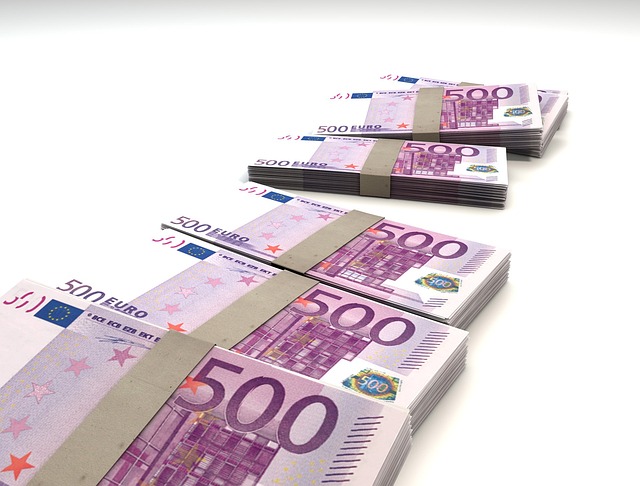1. ما هو عامل الربح؟

عامل الربح هو مقياس رئيسي يُستخدم لتقييم ربحية استراتيجية التداول أو نظام التداول. إنه مفيد بشكل خاص لاختيار EAs (أنظمة التداول الآلي) وتقييم فعالية استراتيجيات التداول الاختيارية.
يتم حساب عامل الربح كنسبة “الربح الإجمالي” إلى “الخسارة الإجمالية” خلال فترة معينة. الربح الإجمالي يشير إلى مجموع جميع الأرباح خلال الفترة، بينما الخسارة الإجمالية تشير إلى مجموع جميع الخسائر. صيغة الحساب كما يلي:
Profit Factor = Total Profit / Total Loss
إذا كان عامل الربح أكبر من 1، فهذا يعني أن الاستراتيجية مربحة بشكل عام. إذا كان أقل من 1، فإن الخسائر تفوق الأرباح.
يُستخدم هذا المؤشر لتقييم أداء استراتيجية التداول بشكل موضوعي. يستخدم المتداولون عامل الربح لتقييم كفاءة طرقهم أو أنظمتهم، وتحديد مجالات التحسين، وضبط الاستراتيجيات لتحقيق نتائج أفضل.
في القسم التالي، سنناقش لماذا عامل الربح مهم.
2. لماذا عامل الربح مهم؟

عامل الربح هو مؤشر مهم جدًا عند تداول الفوركس أو اختيار EA. يُعد هذا الرقم معيارًا لقياس ربحية استراتيجية التداول، مما يجعله ضروريًا للمتداولين الذين يهدفون إلى تحقيق مكاسب طويلة الأجل.
عامل الربح ليس مجرد نسبة الربح الإجمالي إلى الخسارة الإجمالية. إذا تجاوز هذا الرقم 1، فهذا يعني أن الأرباح تفوق الخسائر، مما يشير إلى استراتيجية ذات إمكانية لتحقيق عوائد مستمرة. إن إعطاء الأولوية لعامل الربح أمر لا مفر منه إذا كنت تريد بناء استراتيجية تداول ناجحة.
ومع ذلك، لا ينبغي الاعتماد فقط على عامل الربح. يجب أيضًا تقييم عوامل أخرى بشكل صحيح. إليك بعض العناصر الرئيسية التي يجب مراعاتها عند تقييم عامل الربح:
1. الانخفاض (Drawdown)
احسب أقصى خسارة تاريخية للاستراتيجية وتحقق من نسبة الخسائر إلى الربح الإجمالي. إذا كان الانخفاض كبيرًا، فإن الاستراتيجية تحمل مخاطر أعلى.
2. معدل الفوز (Win Rate)
قسّم عدد الصفقات الفائزة على إجمالي عدد الصفقات للحصول على معدل الفوز. معدل الفوز العالي مفضل، لكن من المهم موازنة ذلك مع عامل الربح.
3. إدارة المخاطر
إدارة المخاطر حاسمة في أي استراتيجية تداول. التدابير لتقليل الخسائر ضرورية.
تقييم المؤشرات بشكل صحيح، بما في ذلك عامل الربح، واتخاذ القرارات بناءً على فلسفتك التداولية الخاصة هي مفتاح النجاح على المدى الطويل. بينما عامل الربح مهم، لا تعتمد عليه وحده. اتبع نهجًا شاملاً وراجع باستمرار استراتيجياتك التداولية لتحسينها وإدارة المخاطر وتنمية أصولك مع مرور الوقت.
3. كيفية حساب عامل الربح

حساب عامل الربح بسيط جدًا. فقط قسّم الربح الإجمالي على الخسارة الإجمالية. إليك كيفية القيام بذلك خطوة بخطوة:
- احسب الربح الإجمالي والخسارة الإجمالية. – على سبيل المثال، إذا كان الربح الإجمالي من جميع الصفقات خلال فترة معينة هو 10,000 دولار والخسارة الإجمالية هي 5,000 دولار، فإن الربح الإجمالي هو 10,000 دولار والخسارة الإجمالية هي 5,000 دولار.
- قسّم الربح الإجمالي على الخسارة الإجمالية.
– الصيغة كما يلي:
- Profit Factor = Total Profit / Total Loss
- على سبيل المثال، إذا كان الربح الإجمالي 10,000 دولار والخسارة الإجمالية 5,000 دولار،
- 10,000 / 5,000 = 2.0
- عامل الربح هو 2.0.
The profit factor shows the ratio of total profit to total loss. It’s an important metric for measuring investment performance. The higher the value, the more efficiently your investments are working; generally, a value above 1.0 is desirable. For automated trading or EAs, a value between 1.2 and 1.5 is often considered good.
The profit factor is easy to calculate and is useful for quantifying investment performance. Make it a habit to calculate it regularly and use it as a reference for your investment decisions.
4. Ideal Target Value for the Profit Factor

The profit factor is a key indicator for evaluating the profitability of a trading strategy. For traders seeking long-term gains, an ideal average profit factor is often said to be “1.2 to 1.3.” Here are two reasons why this range is considered ideal:
1. Profit Is Generated Above 1.0
A profit factor above 1.0 means that total profits exceed total losses—in other words, the strategy is profitable. On the other hand, a profit factor below 1.0 likely means the strategy is generating losses.
2. Provides a Buffer
A profit factor of 1.2 or higher means your strategy has enough cushion to withstand future fluctuations and unforeseen events. If the profit factor is below 1.2, it may indicate there is not enough buffer to consistently generate profits.
However, a high profit factor isn’t always ideal. In risky trading, you must consider the balance between risk and return. Even if the profit factor is high, you need to determine if you’re comfortable with the associated risks.
The ideal target value for the profit factor also depends on your trading style, strategy, and risk tolerance. It’s important to evaluate performance using a combination of indicators, not just one metric.
Therefore, finding the right profit factor target for your own trading strategy—and striking the right balance—is the key to success.
5. Risks Hidden in EAs with High Profit Factors

EAs with high profit factors may seem attractive, but you need to be cautious. Here are some potential risks associated with EAs that have a high profit factor:
Over-Optimization (Overfitting)
Over-optimization occurs when an EA is excessively tailored to historical data, resulting in a high profit factor. However, such EAs may not perform well in new market conditions and can be unstable in real trading.
Low Number of Trades
EAs with high profit factors sometimes have very few trades in backtesting. A small number of trades means the performance data may not be statistically reliable and could simply be the result of chance. More trade data is necessary for validation.
High-Risk Trading Strategies
Some EAs may employ high-risk strategies to achieve a high profit factor. While these can yield big profits temporarily, they may also incur large losses when market conditions turn unfavorable.
Differences from Live Trading Conditions
In live trading, there are many factors that can affect EA performance. An EA showing a high profit factor may have been optimized without considering these real-world conditions, so it may not perform as well in actual trading.
For these reasons, you should evaluate EAs with very high profit factors with caution. Always run demo tests and make careful decisions before moving to live trading.
Conclusion
The profit factor is a very important indicator for evaluating the profitability of a trading strategy. While a value of 1.2 to 1.3 is generally considered ideal, you shouldn’t rely on this metric alone. It’s also important to consider other elements like drawdown, win rate, and risk management. While EAs with high profit factors can be appealing, there are risks such as over-optimization and aggressive trading strategies to watch out for. To succeed in trading, you need to properly evaluate a variety of metrics—including the profit factor—and make decisions based on your own trading philosophy. By continuously reviewing and improving your strategies, you can aim for long-term asset growth.
Frequently Asked Questions
What is the profit factor?
The profit factor is an important indicator used to evaluate the profitability of a trading method or system. It is calculated as the ratio of total profit to total loss. A value above 1 indicates profitability. This metric is used to objectively assess the efficiency of a trading strategy.
Why is the profit factor important?
The profit factor is very important when trading FX or selecting an EA. This value shows the profitability of a trading strategy, making it essential for traders aiming for long-term gains. However, don’t rely solely on the profit factor; also evaluate other aspects like drawdown, win rate, and risk management.
How is the profit factor calculated?
Calculating the profit factor is very simple: just divide total profit by total loss. For example, if total profit is $10,000 and total loss is $5,000, the profit factor would be 2.0. This indicator plays a key role in measuring investment performance.
What is an ideal target value for the profit factor?
For traders seeking long-term gains, an average profit factor of 1.2–1.3 is often considered ideal. This is not only because it indicates profitability above 1.0 but also because it provides a buffer against future market fluctuations. However, the ideal value depends on your risk-return balance, trading style, and risk tolerance.
العامل الربحي هو مقياس حاسم لتقييم ربحية استراتيجية التداول. يقدم هذا المقال شرحًا تفصيليًا لعامل الربح، بدءًا من نظرة ع[…]
Reference Sites
✅よくある誤解は「プロフィットファクターは高ければ高いほど良い」というものです。プロフィットファクターが2以上のEAは遅…
プロフィットファクターとは、総利益を総損失で割って求められる数値のことです。総利益が総損失に対して何倍かの比率を表し、1…












